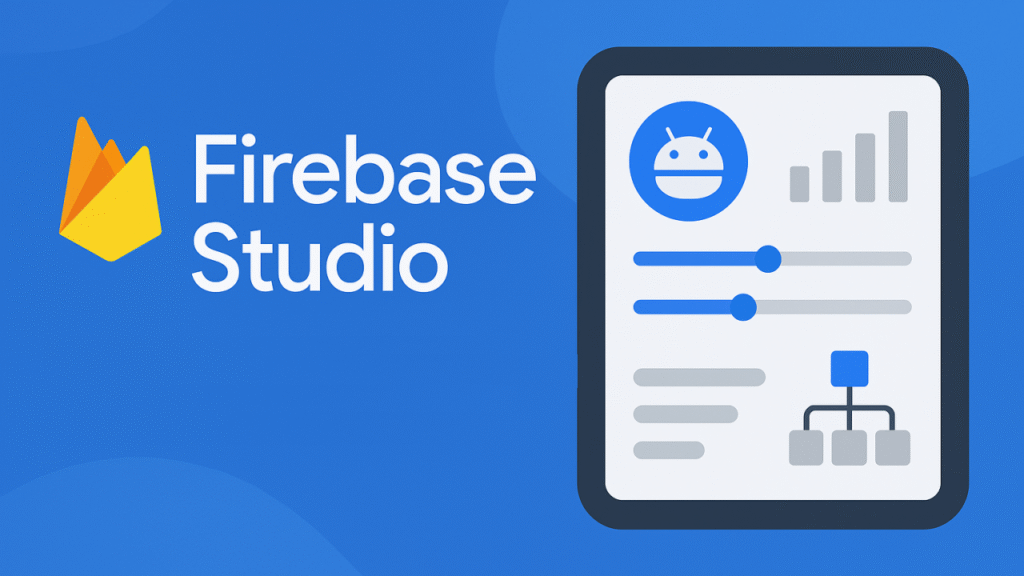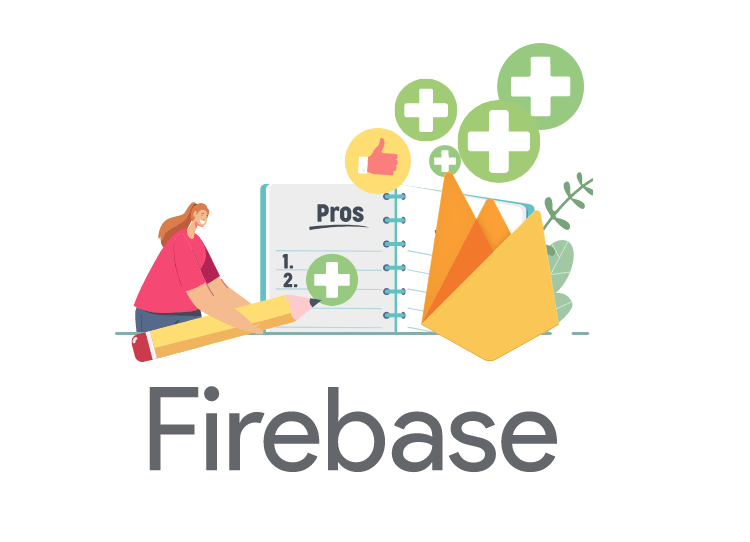Introduction
In a world where digital solutions are essential for business, education, and innovation, not everyone has the skills—or the time—to learn how to code. That’s where no-code platforms come in, giving non-developers the power to build fully functional apps using visual tools instead of traditional programming languages. One of the most exciting additions to this space is Firebase Studio, Google’s latest tool designed to simplify app creation for everyone.
Built on the reliable foundation of the Firebase ecosystem, Firebase Studio combines the strength of real-time databases, authentication, and cloud hosting with a clean, drag-and-drop interface. It’s designed for non-technical users who want to bring their ideas to life—fast.
This article explores how Firebase Studio is transforming the no-code development space. From solving common challenges faced by beginners to offering enterprise-ready features, we’ll look at why this tool is quickly becoming a favorite for solo creators, educators, and teams looking to innovate without writing code.
2. The Problem: Why Non-Developers Struggle to Build Apps
Building an app can be a game-changing idea—but for non-developers, it often feels like an impossible task. The traditional app development process involves learning complex programming languages like JavaScript or Dart, setting up backend infrastructure, configuring databases, and understanding deployment workflows. For someone without a technical background, this steep learning curve can be overwhelming.
Hiring a developer is one solution, but it comes with high costs and communication challenges—especially for solo entrepreneurs, educators, or small business owners working on a tight budget. Even using low-code tools still requires some scripting knowledge, which can be intimidating and confusing for first-time users.
Moreover, non-developers often struggle with decision fatigue: choosing the right tools, frameworks, and hosting solutions becomes a roadblock rather than a launchpad. As a result, many great ideas never make it past the planning stage.
This is where Firebase Studio enters as a game-changer. By simplifying the entire app-building process—especially for users with no coding background—it empowers people to go from idea to execution with just a few clicks. It levels the playing field and unlocks the ability to create without needing to be a developer.
3. Firebase Studio: A Tool Built for Simplicity
Firebase Studio is Google’s answer to the growing demand for no-code platforms that empower anyone to build apps—regardless of their technical skills. Designed with simplicity at its core, Firebase Studio removes the barriers of traditional app development and puts powerful tools into the hands of everyday users.
What sets Firebase Studio apart is its visual-first approach. Instead of writing lines of code, users can drag and drop components like buttons, forms, and images onto a canvas. Everything is built visually, allowing creators to focus on the app’s functionality and design, not syntax or debugging errors.
Firebase Studio is tightly integrated with key Firebase services, such as Firestore for real-time data, Authentication for user logins, and Hosting for quick deployment. These powerful features are seamlessly accessible through simple menus and configurations, making them easy for beginners to use.
Even better, Firebase Studio doesn’t sacrifice flexibility. As users grow more confident, they can gradually introduce advanced features, connect external APIs, or even add custom logic—while still working within a user-friendly interface.
In essence, Firebase Studio is a thoughtfully built platform that simplifies app development without limiting creative control—ideal for non-developers ready to turn their ideas into real, working applications.
4. Step-by-Step: How Non-Developers Can Build Apps in Firebase Studio
With Firebase Studio, building a functional app is no longer limited to experienced developers. Even with zero coding knowledge, you can go from idea to launch by following these simple steps:
Step 1: Sign in to Firebase Studio
Start by logging into Firebase Studio with your Google account. Once inside, click on “Create New Project”, give your project a name, and Firebase will set up the backend for you—no server configuration needed.
Step 2: Choose a Template or Start from Scratch
Firebase Studio offers pre-designed templates for common app types (e.g., task managers, forms, login portals). You can select one or build your app from a blank canvas using the drag-and-drop interface.
Step 3: Design Your App Visually
Use the builder to drag UI components like text fields, buttons, lists, and images. You can customize their layout, size, and appearance—all without touching code. The platform lets you visually structure pages, user flows, and data presentation.
Step 4: Connect to Firebase Services
Add a Firestore Database to store user inputs or product data. Connect Firebase Authentication to enable Google sign-ins or email/password logins. You simply select these features from a menu—no need to write backend code or worry about security rules.
Step 5: Add Logic (Optional)
Use visual logic blocks to trigger actions like submitting a form, saving data, or displaying messages. These blocks work like flowcharts, helping you add dynamic behaviors easily.
Step 6: Preview and Deploy
Test your app using the Live Preview feature. Once satisfied, click “Deploy” to host it instantly on Firebase Hosting. You’ll get a secure URL with HTTPS access.
In just a few guided steps, non-developers can create fully functional, real-time apps. It’s intuitive, fast, and empowering—bringing app creation within reach for everyone.

5. Top Features That Help Non-Developers Succeed
Firebase Studio is designed with user-friendliness at its core, offering a powerful set of features that make app development accessible even for complete beginners. Here are the top features that make it easy for non-developers to succeed:
Drag-and-Drop Interface
At the heart of Firebase Studio is its intuitive visual builder. Users can design app screens by simply dragging components like buttons, images, text fields, and lists—no need to write a single line of code.
Built-In Firebase Integration
With seamless access to Firestore (database), Firebase Authentication, and Firebase Hosting, users don’t need to set up or configure external services. Data storage, login systems, and deployment are all integrated and just a few clicks away.
Easy Authentication Setup
Non-developers can easily add user sign-up and login features using prebuilt authentication flows. Whether it’s via Google, email/password, or anonymous login, the setup is quick and secure.
Real-Time Data Updates
Thanks to Firestore, data is updated in real-time across devices. Whether building a chat app, live dashboard, or collaborative tool, users see changes instantly without refreshing.
Visual Logic & Interactions
Firebase Studio supports logic blocks that let users define actions like “submit form” or “show popup” based on conditions. It’s like coding with flowcharts—ideal for beginners.
One-Click Deployment
With Firebase Hosting built in, users can deploy their app with one click and receive a secure, shareable web link instantly.
These features remove complexity and boost confidence, allowing non-developers to build real, usable apps without needing to rely on technical experts.
6. Success Stories: Who’s Using Firebase Studio Already?
Since its launch, Firebase Studio has quickly gained attention from a wide range of users—entrepreneurs, educators, small business owners, and even enterprise teams. Its no-code capabilities have enabled real people to turn their ideas into functioning apps without the need for traditional development resources.
Solo Entrepreneurs Launching MVPs
Take Sarah, a non-technical founder who wanted to test a niche fitness tracking app. With Firebase Studio, she built a simple, fully functional prototype within a week—complete with user login, workout logs, and a dashboard. No developer was hired, and she used the app to pitch investors.
Educators & Students
Teachers are using Firebase Studio to introduce app development concepts in classrooms. By skipping the complex coding, students can immediately focus on designing interfaces and understanding how data flows in an application. It’s being used in tech bootcamps and even high schools to teach product thinking and digital creativity.
Internal Teams in Corporates
At a mid-sized logistics firm, a non-technical operations manager used Firebase Studio to build a shipment tracking tool that replaced outdated Excel sheets. The tool updates in real time, integrates with Firebase Authentication, and saved the company both time and development costs.
These stories highlight Firebase Studio’s ability to empower individuals and teams, regardless of their technical background, to build useful apps quickly and effectively.
7. Tips for First-Time Users
Getting started with Firebase Studio is easy, but a few smart practices can make your first project smoother and more successful—especially if you’re new to app development.
Start Small with a Clear Goal
Don’t try to build a complex app on your first attempt. Begin with something simple like a to-do list, contact form, or basic data dashboard. This helps you understand the platform’s flow without feeling overwhelmed.
Use Templates and Walkthroughs
Firebase Studio offers ready-made templates for various app types. These are perfect for learning how screens, logic, and database connections work. You can customize these templates later to fit your specific needs.
Name Everything Clearly
As your app grows, it’s important to label your components, pages, and database collections clearly. This helps you stay organized and makes troubleshooting easier later on.
Test Often
Use the Live Preview mode regularly to check how your app behaves. Make small changes, then test—this reduces the chance of introducing hard-to-trace issues.
Explore Firebase Documentation
Even as a no-code user, browsing the Firebase documentation can give you a better understanding of what’s happening under the hood. It’s also useful when you want to scale or add advanced features later.
With these tips, your experience with Firebase Studio will be more efficient, enjoyable, and productive—even if you’ve never written a line of code before.
8. Is Firebase Studio the Best No-Code Option for You?
With the rise of no-code platforms like Bubble, Glide, Adalo, and Thunkable, you might wonder whether Firebase Studio is the right choice for your needs. The answer depends on your goals, technical comfort, and project scale.
Firebase Studio is ideal if you:
- Want Google-native integration with Firebase services (Firestore, Auth, Hosting).
- Need to build real-time web apps with strong backend capabilities.
- Prefer a visual interface but plan to scale later with code if needed.
- Seek enterprise-grade performance and security from day one.
However, if your focus is on:
- Mobile-first design with native iOS/Android builds (like Adalo or Thunkable),
- Highly customized UI animations and workflows (like Bubble),
- Or building quick visual databases from spreadsheets (like Glide),
- —then those tools might offer more out-of-the-box simplicity for those use cases.
Firebase Studio stands out for blending no-code convenience with backend scalability, making it perfect for users who want more than just prototypes. It’s particularly strong for startups, internal tools, education, and product MVPs.
If you’re aligned with Google’s ecosystem and want a future-ready, flexible builder that can grow with your skills or team, then Firebase Studio could very well be the best no-code option for you.
9. Conclusion
Firebase Studio is a breakthrough platform for non-developers who want to turn their app ideas into reality—without writing a single line of code. Backed by Google’s powerful Firebase services, it combines a clean, visual interface with robust backend tools like real-time databases, authentication, and one-click hosting.
While it may not replace more specialized no-code platforms for every use case, Firebase Studio shines where it matters: simplicity, scalability, and integration. It empowers entrepreneurs, educators, and teams to move fast, test ideas, and build production-ready apps.
Whether you’re starting your first project or exploring new ways to innovate without hiring a full dev team, Firebase Studio is a tool worth exploring. It represents a growing shift toward democratizing app development—and it’s only just getting started.



